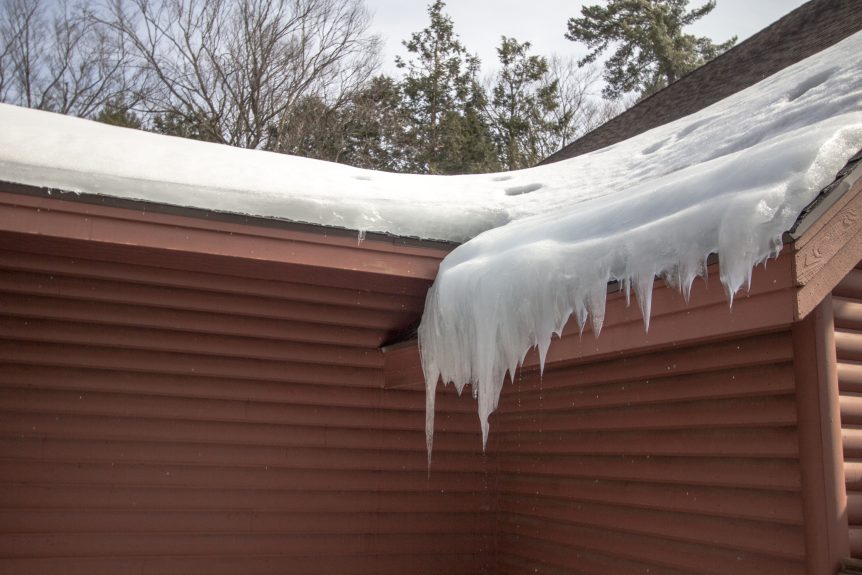Ice dams are caused by snow melting off your roof then refreezing when it hits the part of the roof that is below freezing. This causes melting and refreezing over and over again until water starts to come through your ceiling. Ice dams are a nightmare for anyone who has one, but they’re easy to prevent if you know what causes them in the first place. They can be prevented with a few simple steps like sealing air leaks, adding insulation or changing out old shingles (which may have holes) on your roof. You can also prevent ice dams by making sure there is a clear line for the water to fall into gutters instead of pooling behind them or causing other damage inside your home.
Insulation will help keep warm air from escaping your home.
If you want to keep warm air from escaping your home, insulation is a good investment. Insulation helps prevent heat loss through the attic of your home and reduces the amount of energy needed to heat your home.
The water pooling behind the dam can damage walls, ceilings, insulation, and other areas of your home.
If you have a pool of water collecting behind your ice dam, it can cause serious damage to your home. Water can seep into walls and ceilings, causing mold and mildew to grow. It can also damage insulation, which raises energy bills and lowers the value of your property. In addition, if the water freezes again after it’s been warmed up by indoor heating systems (like forced air furnaces or electric baseboard heaters), this could lead to structural damage as well as electrical problems due to shorts in wiring or switches being melted by excessive heat generated by short circuits caused by freezing weather conditions.
Seal air leaks and add insulation to your attic.
- Seal air leaks and add insulation to your attic. Air leaks can cause snow to melt in areas of your home that don’t need it, making ice dams more likely to form in the future. It’s also important to note that older homes are more likely than newer ones to have these kinds of problems.
- Use a flashlight to look for leaks. If you’ve found evidence of a leak, there’s no better time than now (when temperatures are low) to fix it before winter rolls around again next year!
- Insulate your attic. If you have an uninsulated attic or an unfinished basement ceiling below yours, this is also something worth checking into—you might find that some quick insulation fixes could save you from having to deal with ice dams later on down the road!
Preventing ice dams by sealing off points of heat loss and making sure there is a clear line for the water to fall into gutters.
There are several ways to prevent ice dams.
- Seal off points of heat loss. If you have cracks or gaps, seal them with caulk or foam. Make sure the sealant is freshly applied and will stick to the surface it’s covering.
- Add insulation to your attic if it’s accessible, then make sure that there is a clear line for the water to fall into gutters so that ice doesn’t build up in between them and cause damage when it melts later on down the road (which could lead to even more leaks). You may need professional help for this one!
Use calcium chloride ice melt products to remove snow and ice from your roof.
- Use calcium chloride ice melt products to remove snow and ice from your roof.
- You can also use salt or sand, but do not use rock salt on roofs that are less than 4 years old.
Install a metal flashing in valleys that is at least 3 inches wide.
- Metal flashing is a piece of metal that’s used to protect the roof from water damage.
- Metal flashing should be at least 3 inches wide, and should be installed in valleys between two slanted surfaces on a pitched roof. Metal flashing is not required on flat roofs; however, you can install it if you want to add an extra layer of protection from ice dams and other problems caused by freezing temperatures.
Heat cables can keep ice dams from forming in the first place but they should not be used on roofs that are less than 4 years old.
The most effective way to prevent ice dams from forming is by installing heat cables. Heat cables can be installed on roofs with a slope of 5:12 or greater, and it’s best to install them by a professional.

